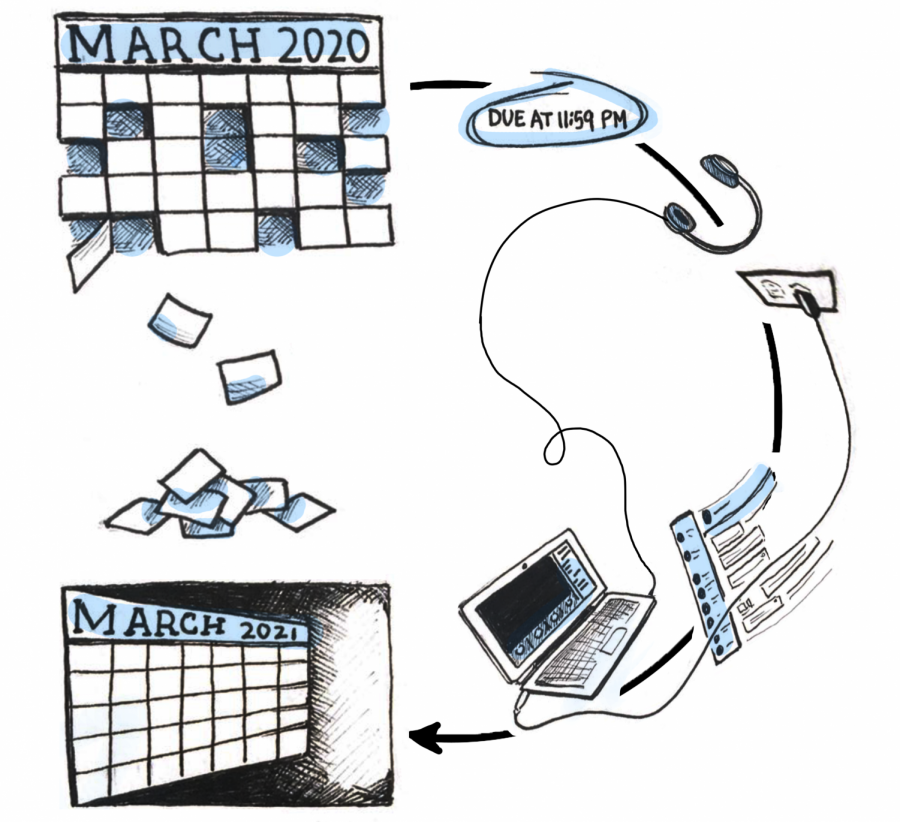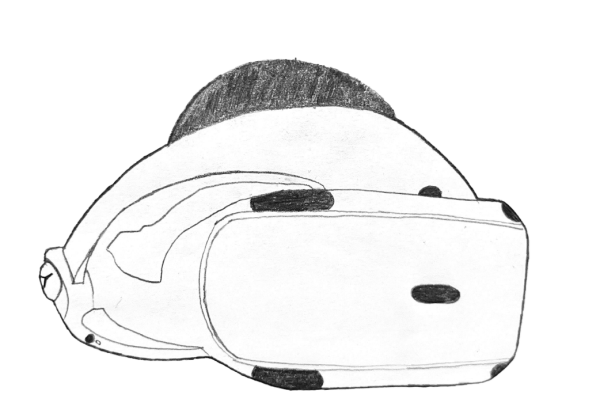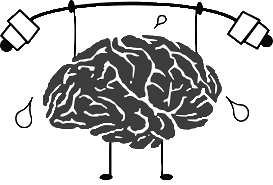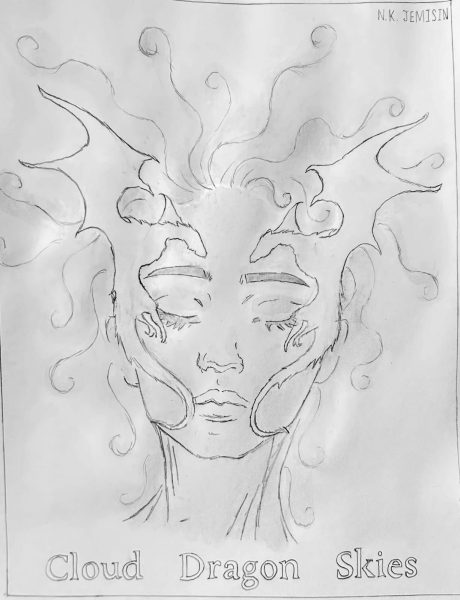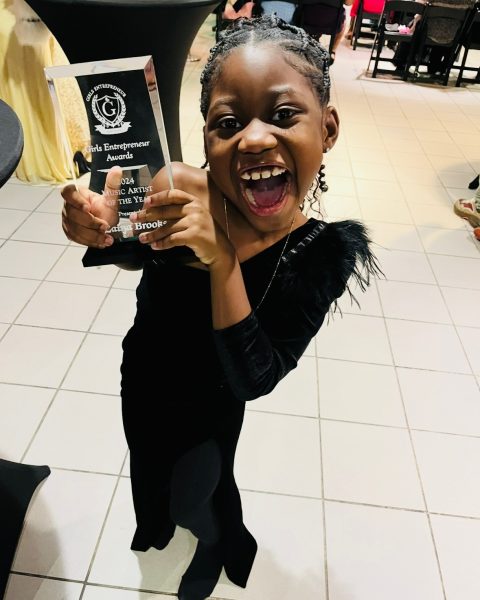The Year of Covid
12 Months of absence, change, and hope at Garfield.
During lunch on March 11th, 2020, news started to spread through Garfield’s hallways that school had been canceled for two weeks to prevent an outbreak of COVID-19. The two weeks soon became a month, then the month became the rest of the school year. Now, this March marks the first full calendar year of virtual learning.
This experience will have permanent impacts on this generation of students, and the school system as a whole. Virtual learning has led students and educators to re-evaluate the importance of standardized tests, required teachers to incorporate more technology into their curriculums, and drastically altered everyone’s expected high-school experience. Amidst all of the hardships that Garfield has felt this year, students and staff reflect on their favorite memories of in-person learning, the changes they’ve experienced, and their hopes for the future.
WHAT WE MISS
The last year has given opportunity for many to reflect on what we miss from our previous lives before COVID. Around this time a year ago, nobody thought twice about each passing day, but now a year later, we look back at those last few days of normality as cherished memories. After it was announced that Garfield students would be sent home for two weeks, many thought that life would quickly go back to normal.
“We didn’t know how serious it was yet we thought we just had 2 weeks off,” Avalon Leonard, a Garfield student said. “My friends and I talked about going to Hawaii since ticket prices were down.”
At the time, the possibility of an extra break from school seemed like a blessing for students, as most were unaware of the seriousness of the situation.
“Mr. Young let us watch Monty Python and the Holy Grail because he knew no one would be able to focus on work. Everybody was excited for two weeks off and people were chatting, laughing, and enjoying the movie,” said Aviv Pinker, a current Garfield senior. “We all left buzzing and full of energy, weirdly thrilled by what was happening. As a junior, I couldn’t have possibly imagined that would be my last in-person high school class ever.”
As reality set in, and the last year seemingly turned into a blur, many have begun to reflect on what they have missed in the Garfield community. For students, this has meant missing some of their favorite school events, traditions that define the Garfield experience.
“[I miss] going to sports events, seeing people at school, lunch time; something people don’t really appreciate until it’s gone,” said junior Jack Jassy. “When you can just chill out with friends, just being able to talk to more people that aren’t necessarily my best friends, because right now we can only see a few people.”
From the random conversations in the halls, to chaotic assemblies, and the craziness around Purple and White—the spontaneity and oddity of being in the building are what many miss most.
But for underclassmen at Garfield, the opportunity to have these experiences has been erased this past year.
“I’m doing full-time running start, so this was gonna be my last year at Garfield so I’m kinda sad that I can’t finish it,” said Mya Spady, a sophomore. “I’m grateful that I’m not starting at Garfield as a freshman. I was new to Seattle schools and I didn’t know anybody so I can’t imagine having to start high school online where it’s just really hard to make friends.”
Building relationships around the Garfield community online has been difficult, and not just for students.
“I die a little bit every day, not being able to see students and not being able to do the things that I really love to do in the classroom,” said Dr. Finley, a science teacher at Garfield.
Apart from the obvious dip in participation and the lack of face-to-face interaction that comes with virtual school, the loss of the class environment and freedom to teach has been a massive blow to the connection between students and staff.
“Going to all online and not being able to do any science experiments has been so hard and trying to figure out how to tell a story and not being able to tell a story,” Finley said. “It is so hard, but what keeps me being a teacher is being able to build relationships with students.”
WHAT HAS CHANGED
The contrasts between March of 2020 and March of 2021 are immense. Of course, social distancing and online school has been implemented, but curriculums and relationships have also had to alter to fit into the pandemic’s demands.
“[Virtual learning] is definitely way more structured than last March, in March of last year I didn’t have any synchronous class meetings but of course, now I have three every day,” Spady said. “I would say at first it was kind of nice because it was A or incomplete and most of my teachers did say you have to earn the A, and I did, but then I found out that other people didn’t do anything and still got an A. There weren’t nearly as many assignments so now it’s a little more stressful but I would say that in general teachers are pretty understanding about workloads and stuff like that.”
A year later, excitement and anticipation have changed to much darker emotions. Last winter, Garfield students were preparing for tropical vacations, spending time with family, and winter ball. This year, many students spent the holidays staring at a computer screen and wishing for a few more hours of sleep.
“I remember being excited because I thought we would be getting a week or two off of school,” Jassy said. “Which is normally associated with positive thoughts, but [it] wouldn’t have been if I had known what it would have entailed.”
The stark contrast between online and in-person schooling has taken a toll on student’s mental health.
“I would say [what I miss most is] just running into my friends in the hallway,” Spady said. “ It’s hard when you’re in your Teams classroom and you’re kinda by yourself”.
Unfortunately for both students and teachers, the start of the 2021-22 school year won’t necessarily be a flip of the switch back into normalcy. Hybrid learning is looking like a strong possibility in the fall, with the hope to return to full building capacity later on.
“Every single thing I do is brand new. This is definitely the hardest year of teaching that I have ever taught,” Finley said. “Going to all online and not being able to do any science experiments has been so hard and trying to figure out how to tell a story. That’s really what I love about teaching science and the way I teach science is being able to tell a story and to have students understand how the world works”.
Students and teachers have had to work hard to come together and find a comfortable middle ground where the teachers can teach and students can proficiently absorb the material.
Though the uncertainty of teaching will transfer over into the next school year, it may not be all bad.
“I was homeschooled in 8th grade, and people kind of looked down on that and were like, ‘oh that’s weird to be homeschooled,’” Spady said. “I feel like there’s gonna be less of a stigma around [online learning] now cause we’ve all experienced that and I feel like our generation will probably just be more appreciative of going to school and not view it as something that’s so dreadful.”
HOPES FOR THE FUTURE
Hope has played a complicated and crucial role throughout the course of this pandemic. Last March, it was almost unfathomable that there could be an entire year of virtual learning, yet as people have grown more acclimated to the pandemic’s restrictions, expectations for returning to normalcy are becoming more realistic.
Not only have hopes for getting back to normal changed, but the concept of “normal” itself has changed too. With the promise of a return to in-person learning finally getting closer, Garfield’s students have mixed hopes for the future, and what a return to “normal” would mean.
On March 12th, Governor Jay Inslee, issued an emergency proclamation requiring all K-12 schools to offer some form of in-person learning by April 19th. Under these new requirements, in-person learning can be a hybrid system, and students will still have the option to continue with virtual learning if they don’t feel safe returning. However, schools will now need to allow all students to attend at least 30% of their school hours on-campus if they choose to.
“We’re doing this because we have experienced a mental-health crisis for many of our children,” Inslee said during the press conference for his proclamation.
This proclamation comes after many signs that Seattle Public Schools would not be reopening this school year, including the Seattle Education Association voting to continue teaching most students entirely online, and the announcement that AP tests would be offered virtually.
While eventually returning to in-person-learning is a hope for most students, the suddenness of the return can also be a source of anxiety.
“Honestly, as much as I would love to see my friends and my teachers I don’t really feel comfortable going back until everybody’s vaccinated,” Spady said.
On top of safety concerns, many students have grown accustomed to virtual learning, and didn’t expect their routines to be uprooted by a return to campus.
“I think it will take getting used to for a lot of people because students are getting used to only having class for a couple hours,” Jassy said.
Though there are a lot of concerns about a return to school this year, virtual learning has been extremely hard on many students, as well as teachers.
“I spent almost every day up until winter break convincing myself to come back to school and to not quit my job,” Finley said.
For teachers struggling with the lack of virtual interaction, students with difficulties learning in a virtual environment, people whose mental health has worsened, and students who were looking forward to a senior experience, Inslee’s proclamation is a source of new hope.
Garfield will need to learn how to blend the experiences missed from in-person learning with changed mindsets and routines. Everyone’s hope for the future is different, but the new perspectives gained from living through the pandemic will shape a new era for Garfield as we transition back to a redefined “normal”.
Griffin Hintze is a senior and this is his second year on The Messenger. He is the sports editor for this years issue. He is excited to bring his experience...



